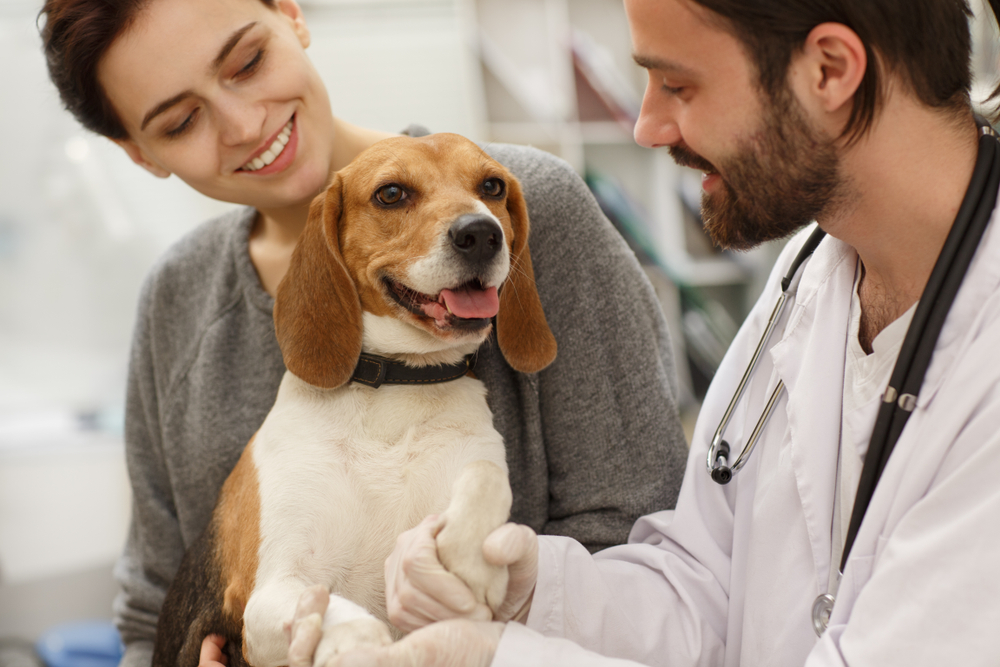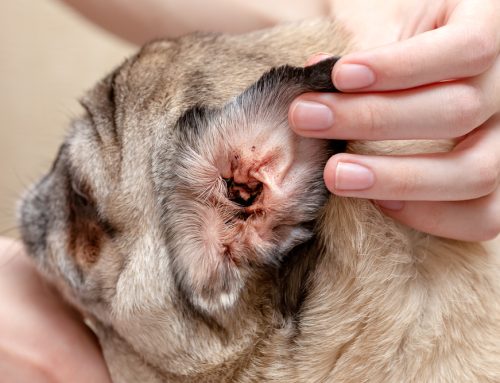Your pet’s number 2 is of number 1 importance—at least in regard to intestinal parasites.
Countryside Veterinary Hospital knows that finding more than your dog’s stool when you clean up can be alarming. Here’s what you need to know about what your pet may leave lying on the lawn or in the litter box, and treatment and prevention of fecal parasites.
Name that thing: Diagnosing intestinal parasites in pets
Adult worms in your pet’s stool are obvious, but intestinal parasites can infect your pet despite no visible signs. An intestinal parasite screening at Countryside Animal Hospital, which we include in pets’ regular wellness check-ups, is a microscopic analysis of fecal material for eggs and immature parasite forms. Early identification of infection can prevent negative health effects to your pet, and potential transmission to other pets and people.
Where’d that come from? How your pet gets a parasite
Pets commonly acquire intestinal parasites through the fecal-oral route, where a pet ingests contaminated stool of wildlife or domestic pets. Several intestinal parasites have additional ways of getting inside your pet.
- Roundworms — Virtually all puppies and kittens acquire roundworms from their mothers while still in the womb, or through nursing.
- Hookworms — These worms penetrate the skin of animals and humans.
- Tapeworms — Tapeworms result when a pet swallows an infected flea, often while grooming.
- Giardia — Infectious cysts can be acquired in fecally contaminated water, food, self-grooming, or on contaminated objects.
Look closely. How do intestinal parasites affect pets?
Let’s look at what these microscopic monsters are capable of, once inside your pet.
- Roundworms — Roundworm larvae migrate from the liver and lungs to reside in the small intestine, where they cause irritation and can form blockages or stunt growth in puppies. Adults can grow up to 12 inches long.
- Hookworms — Hookworms live beneath the skin and feed on blood in the small intestine lining. They can lead to anemia in small pets and puppies.
- Whipworms — Whipworms anchor themselves in the small intestine and feed on tissue fluid, blood, and intestinal lining.
- Tapeworms — Relatively harmless to dogs and cats, these segmented worms can grow to four to eight inches in length.
- Coccidia — A tiny, single-cell protozoa, coccidia is common in puppies and kittens, and is most often found in crowded environments, such as puppy mills and shelters. Coccidia can cause diarrhea and weight loss in your pet during times of stress, such as weaning or relocation.
- Giardia — Another single-cell protozoa, Giardia can be difficult to eradicate because the infectious cysts in the environment are resilient, and reinfection rates are high.
Is it bad? Intestinal parasite signs in pets
Puppies and kittens generally suffer more severe signs than adult dogs and cats, who may show no signs at all. Young pets should be treated promptly to prevent dehydration, malnutrition, and anemia. Common signs may include:
- Diarrhea that may be watery, discolored, or contain mucus
- Vomiting
- Swollen abdomen—typically in puppies and kittens
- Weight loss
- Dull hair coat
- Visible worms in the stool or vomit—roundworms resemble spaghetti, while tapeworm segments look like cucumber seeds or rice
What’s the fix? Intestinal parasite treatment in pets
Effective elimination of intestinal parasites requires a three-point approach—addressing the pet, the environment, and other household members.
- Medication — Many pet stores carry over-the-counter dewormers, but intestinal parasite treatment is never one-size-fits-all. Treatment must be specific to be effective. Our Countryside Veterinary Hospital veterinarian will prescribe the exact medication your pet needs for their specific parasites, and may add supportive aids, such as anti-nausea medication, probiotics, or a prescription diet. Any additional pets in the home should also be tested and treated.
- Hygiene — Hand washing is extremely important after any interaction with your pet, who will still shed parasites during treatment. Dispose of all pet waste immediately. Best practices include keeping your pet’s hind end clean after elimination to prevent accidental reinfection—this is especially important for giardia-positive pets.
- Environment — Pet waste should always be promptly removed from yards, litter boxes, or exercise areas. Do not take your dog to public areas, such as dog parks, during treatment, to prevent spreading infection. Sandboxes and similar play areas should be covered to prevent contamination. Gloves should be worn while gardening.
Your veterinarian will request a second, and sometimes a third, intestinal parasite screening several weeks after treatment. Because shedding cycles vary, pets are not typically deemed parasite-free until two negative fecal tests are recorded.
Let’s not do this again. Intestinal parasite prevention in pets

In addition to addressing your pet’s environment, a monthly preventive is the best protection against intestinal parasites. Many monthly heartworm preventives contain a broad-spectrum parasiticide that can treat most intestinal worms, which is a most convenient prevention method. If your cat or dog is not on a heartworm preventive, Countryside Veterinary Hospital can make recommendations.
At Countryside Veterinary Hospital, we know you love your pet, but not their parasites. Don’t allow a microscopic menace—or the threat of one—to keep your pet at arm’s length. If your dog or cat shows intestinal parasite signs, or you think they may have been exposed to any of these parasites, call us to schedule your pet’s examination and intestinal parasite screening.








Leave A Comment